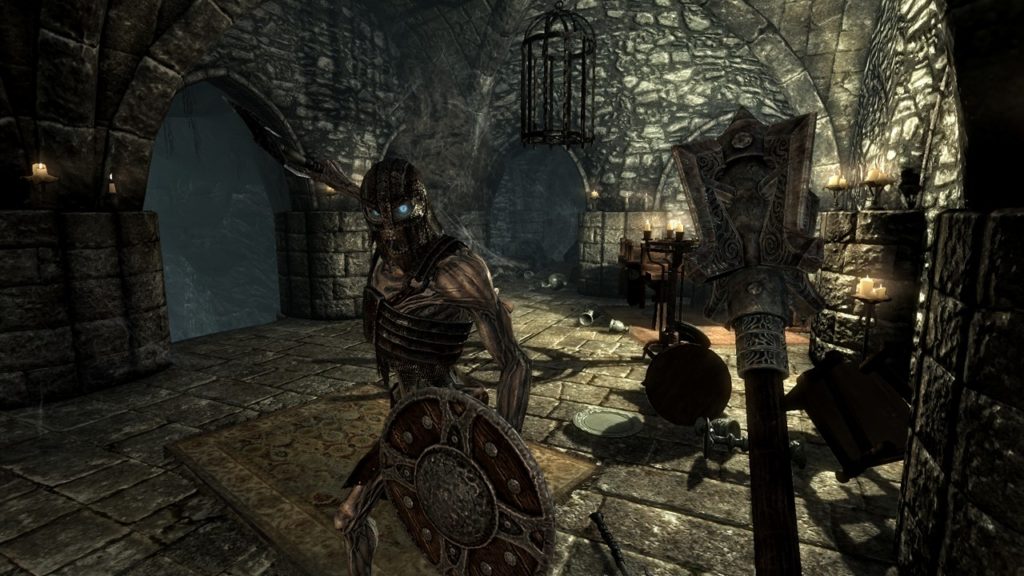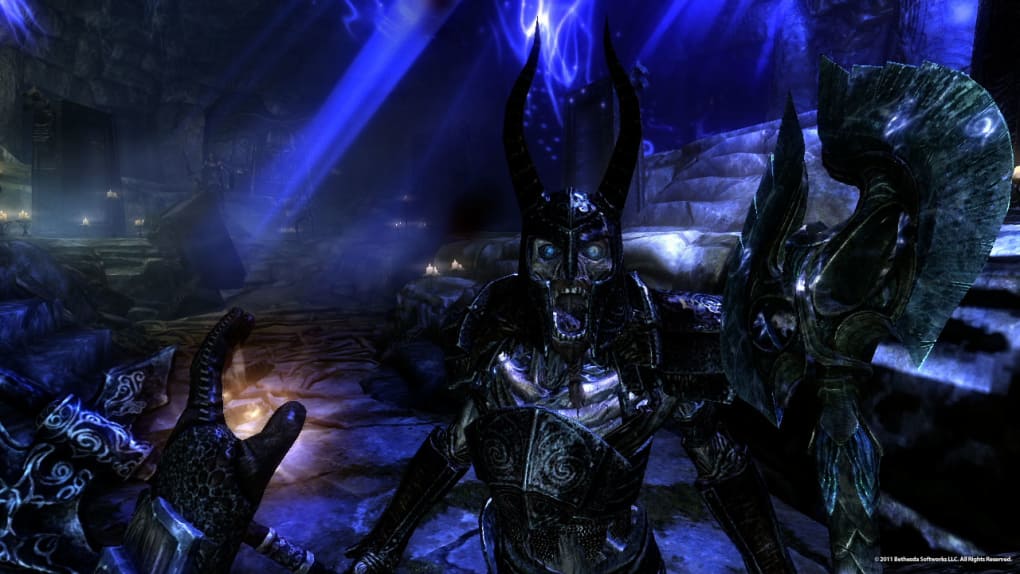When Elder Scrolls 6 was finally announced at this year’s E3, fans of the series immediately began visualizing and dreaming up what the new game might look and play like.
“It’s something that’s going to take a lot of time,” Todd Howard explained. “I could sit here and explain the game to you and you would say ‘that sounds like you don’t even have the technology.” Howard hopes to make Elder Scrolls 6 look and feel exactly as he always envisioned the series being – fun, open, replayable, and endlessly immersive, with gorgeous vistas and hair-trigger encounters lurking around every dark corner.
It sounds almost too good to be true. Regarding more specifics, Bethesda Softworks have remained wisely (though disappointingly) discreet. Speculations and hopes are running wild as to where the next game may take place, what we might expect from the story, and mostly what we might get in the new gameplay. We’ve put together a list of the top 6 features that we need to see in the next Elder Scrolls game.
Haven’t played Skyrim yet? Download it here:
6 things we want from Elder Scrolls 6
6. Multiple GPU support
This point is specific to PC gamers, but considering the massive number of Elder Scrolls fans who enjoyed playing a modded Skyrim or Oblivion on PC, we think this one’s justified.
For those who do not know what multiple GPU support implies, it essentially means that if your PC has two graphics cards you are able to use them both simultaneously, resulting in double the performance. NVIDIA can easily be configured to support this via Scalable Link Interface (SLI) and AMD uses Crossfire. Through multiple GPU support, two cards can be connected together for a significant improvement in the game’s FPS and general capacity to hold more data (like mods).

Multiple GPU support becomes especially necessary when trying to run the game with a lot of mods – something Bethesda has always championed and allowed, even in their newer titles like Fallout 4 or the re-released Skyrim in 2016. If Elder Scrolls 6 is going to run with the increased visuals, 60 FPS, heavy scripts, and huge maps the way that Todd Howard envisions, support of a second graphics card is going to be necessary to see and play the game as intended.
Still unsure how multiple GPU support works? Check out this explanation of how it could improve Elder Scrolls:
5. Branching faction quests
Since Skyrim is a non-linear story where the shape of the narrative is determined by the player, the various quest lines end up telling the story. This provides an experience where the player gets to craft his own story, and makes the game much more replayable. The issue here, though, is that all the quest lines themselves remain painfully linear.
From a simple side quest to hunt for treasure to a more involved chain of quests like the Companions, once a player begins a faction’s journey they wind up with the same experience and the same dungeons every single time. Even during quests like the Dawnguard DLC where players had two branching paths – vampire or vampire slayer – the quest took you through the same environments for the same fetch quests with the same dialogue, and even ended with the same boss fight and loot reward.
For Elder Scrolls 6 to take its narrative to the next level, it doesn’t have to sacrifice putting players “in an uncomfortable situation” as Pagliarulo describes – it just needs to feature more divergent paths where the player feels like they have some choice and impact on the decisions being made around them. There are two ways of accomplishing this:
The first is to offer more factions to the player from the start. Magic is abundant in Skyrim, and yet the only quest line that has anything to do with magic is the Winterhold College, in which you play the role of the hero, saving the college from a catastrophic disaster. Once you’re set on the quest this is the outcome you end up with no matter how you want to roleplay. If you want to play as an evil mage, there’s really no way to do it.
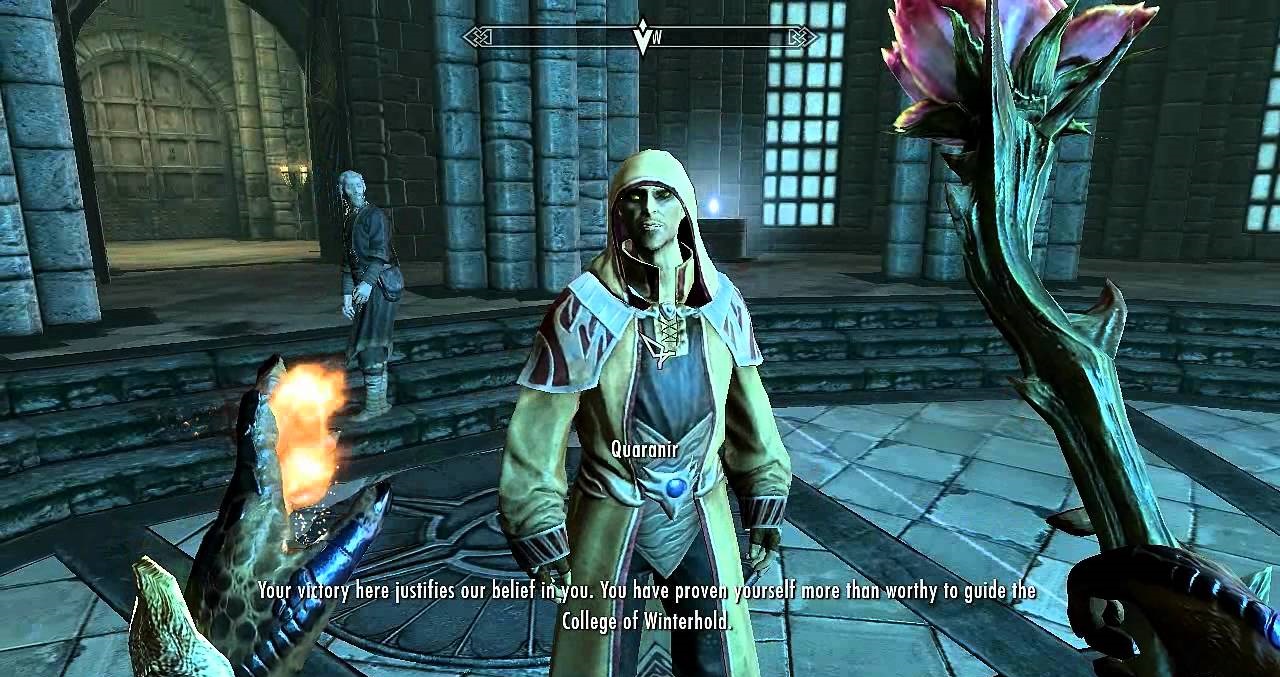
It’d be awesome if there was a guild of necromancers or warlocks who existed under the radar and practiced forbidden spells and rituals, and you had the option of joining their ranks instead. Much like the Blades and Greybeards don’t get along, or how the Dawnguard despise Harkon’s court of Vampire Lords, it’d be a more weighty decision having to pick one faction over the other.
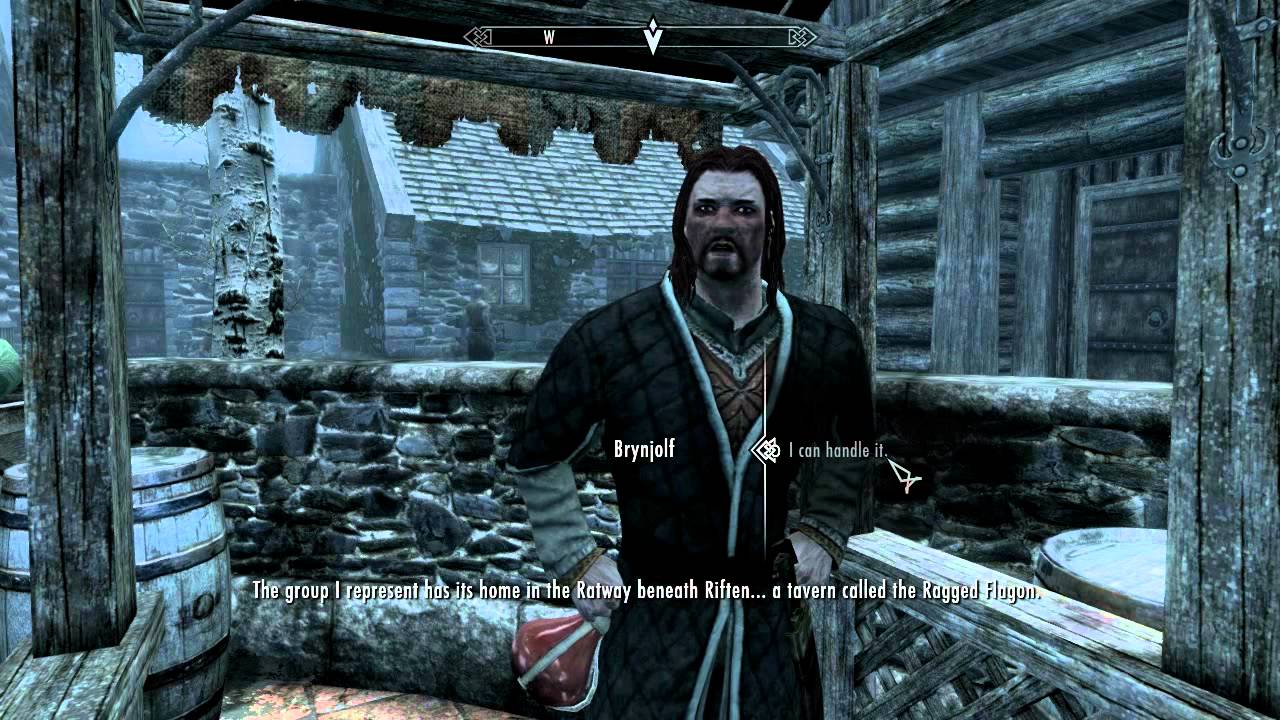
The other way to accomplish a deeper quest-based narrative is to have the player’s choices matter more during the quests themselves. At the end of the Thieves’ Guild quest line you’re given the same outcome no matter how you want to roleplay. Join the Thieves’ Guild and you should expect to go on stealth missions, infiltration, and pickpocket runs, but that doesn’t mean the story has to be the same. The quest line even ends in a straight-up boss battle, which is decidedly unlike a thief to engage in depending how you roleplay him.
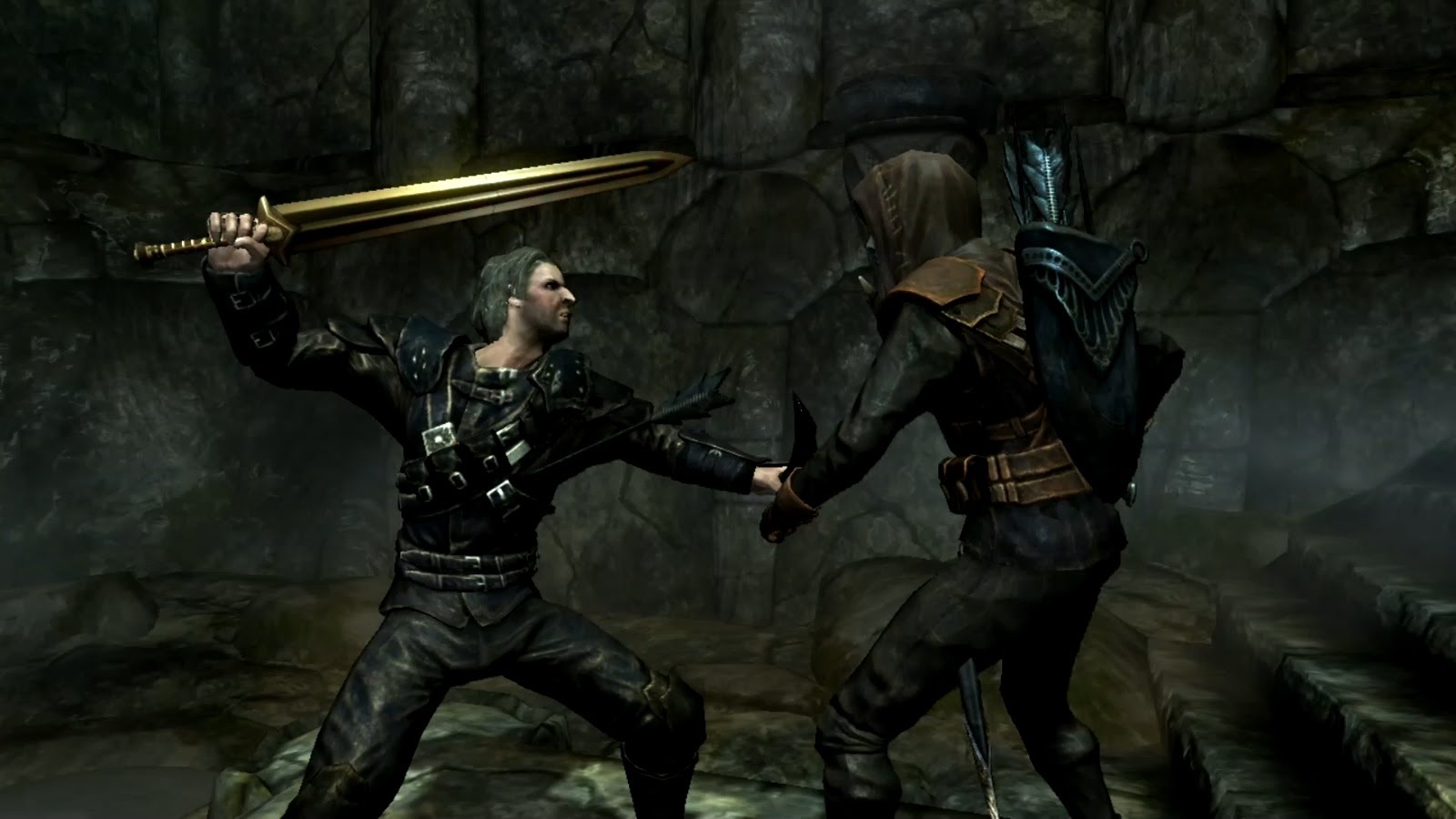
What if, upon completing the Thieves’ Guild quest, you could elect to run the guild like a Robin Hood character, stealing from rich Jarls and nobles to give to the ratways, orphanages, and warrens? And what if you had the choice to instead organize a mafia that gripped the holds in a vise, demanding payment and tribute every time a guild member entered the city? TL, DR: We want more role-playing in our role-playing game.
4. Optional multiplayer functionality
Skyrim remains one of the greatest single-player experiences on the market today, but what would happen if it was opened to public or private servers? The reason this isn’t out of the question is that ESO and Fallout 76 are already testing the waters. Going multiplayer with the Fallout franchise is a big leap for the studio, and we’re hopeful that Fallout 76 will work out any of the kinks that could show up in Elder Scrolls 6.
If Elder Scrolls 6’s multiplayer will work anything like Fallout’s, we could be looking at a 1-4 player experience hosted on a private server where you and three friends get to cut through swathes of enemies, clear out draugr-infested dungeons, and battle liches and dragons side by side. We imagine it looking something like this:
One of Elder Scrolls’ more charming features, though, was always being able to explore the world on your own – making a name for yourself, collecting rare gear, and being a singular entity in a harsh landscape. For players who want to continue playing Elder Scrolls in this way, there needs to be a toggle switch or a specific lobby to join so that players continue to have that control over their experience. Multiplayer has been such a dream for Elder Scrolls fans, that there’s even work on a Skyrim mod specifically to integrate players. You can check out Skyrim Together here:
3. Different dungeon environments
Skyrim – and Tamriel in general – boasts such a versatility of landscapes and vistas that it would be almost criminal for the quests to play out as they so often did in Skyrim: Heading into a cave, crypt, or Dwemer ruin, navigating through brick or earthen tunnels, fighting some enemies, grabbing the loot or shout, and heading out the back door.
Skyrim had over 130 dungeons, and while the number is staggering and offers a huge amount of exploration, replayability, and adventure, the number of dungeons that wound up looking the same was disappointing, to say the least.

Skyrim was Tamriel’s northern region, littered with icy caves, snow-capped mountains, and rolling tundras. And yet so many quests were solving nordic puzzles with claws and movable rocks with snakes, foxes, and whales on them. Even if the landscape of the game is defined by one climate or topography, that doesn’t mean it can’t have some variety in its quest locations. What about a mission in the treetops, or during an avalanche, in a murky swamp, or underwater? It would breathe some life into the world and keep us excited to see where we the next quest takes us. We want more missions that look like this:
2. Better combat
If free-roam exploration is the heart of Elder Scrolls, then combat is the blood and bone. Tamriel is a harsh place with bandit marauders, dwemer automatons, warring factions, vampires, werewolves, and skulking falmer. Go out in the wilds or into a cave and you won’t go 30 seconds without getting into some kind of tussle. And, uh … they don’t always look great.
Skyrim’s combat isn’t clunky, but it isn’t exactly fluid. Not when compared to more recent games like Witcher 3 or Kingdom Come: Deliverance. On a controller, you’ve got right-trigger to swing, left to block, and then a bumper to run and a bumper to shout. The rest of your controls are basic mobility like jumping, crouching, or activating objects. If you want to change weapons or drink a potion to heal, you’ve got to open up your favorites menu, scroll down to the object you’re looking for, and activate it.
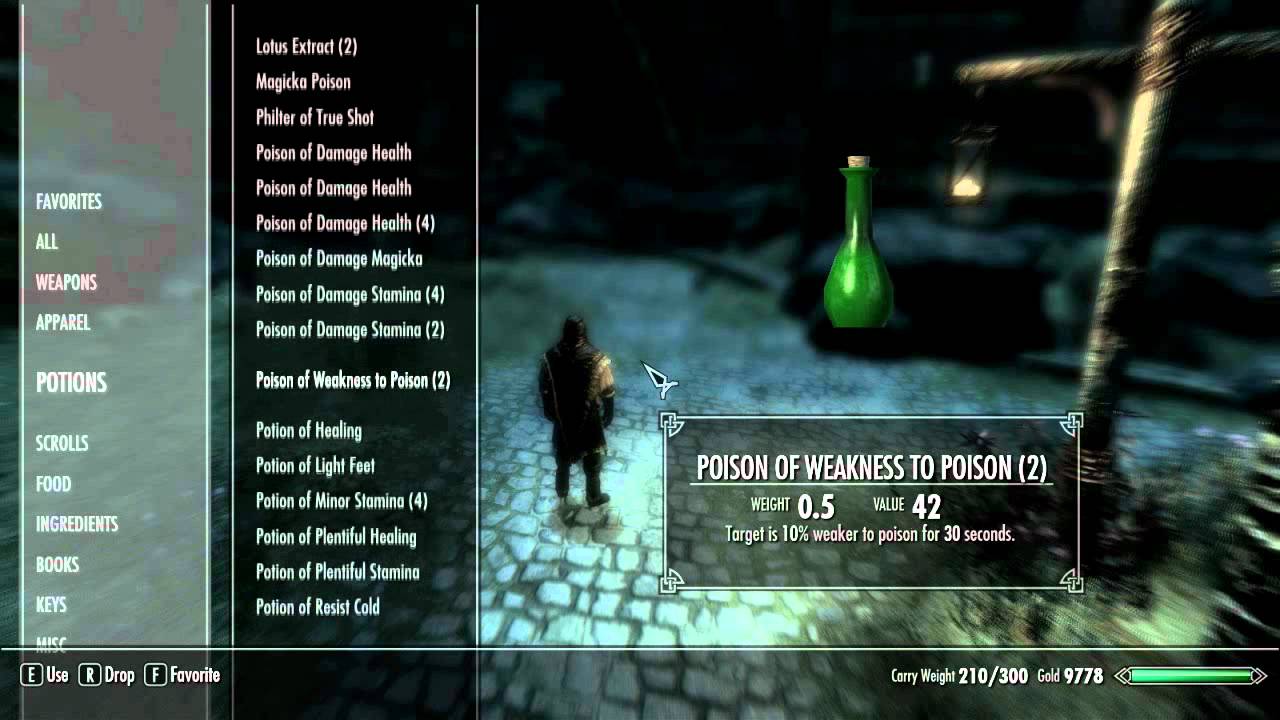
Early on in the game when you’ve only got a few things in your inventory that you’d need in a combat scenario, this is fine. But if you’re playing as a late-game spellcaster you’ll more than likely end up with a favorites menu that scrolls on for a long time. Pausing in the heat of combat to switch spells, equip different armor, or drink a potion is not only unrealistic, but also breaks the game’s otherwise awesome immersion. Implementing a favorites wheel, hotkey allocation, or a press-and-hold vs. quick-press might help to speed things up.
1. Deeper approach to skill trees
The most integral part of a free-roam RPG is what your playable character is able to do, and how he (or she) is able to interact with the world they’re thrown into. That arsenal of possibilities is what helps to make the game so replayable and so exciting to explore and collect more loot, spells, and skill points in. In short, it’s the inherent variety that breeds personality in different play styles.

The skill trees in Skyrim were what you’d need and what you’d expect – damage increases for martial skills, defense bonuses for armor or blocking, and increased efficiency with smithing, alchemy, or enchanting. There were some nice touches like silent casting under Illusion, Wax Key under Lockpicking, or decapitations under the One-handed and Two-handed. There were a great many skills in Skyrim that were not as exciting, though, or that weren’t worth getting at all. The Speechcraft, Alchemy, and Restoration trees come especially to mind.

Aside from damage boosts, the martial perks in Skyrim weren’t overwhelmingly tempting. Of course, boosting damage is important, and so is increasing armor rating, but that’s not to say we couldn’t have also included more creative ideas. Increasing momentum while fighting, rewarding more accurate shield bashes, feints, clashes, shunts, and parries – imagine facing an opponent that could do all of these. Now imagine you’re the one tearing through a bandit camp with a plethora of new unlockable abilities and animations. Way cooler, right?
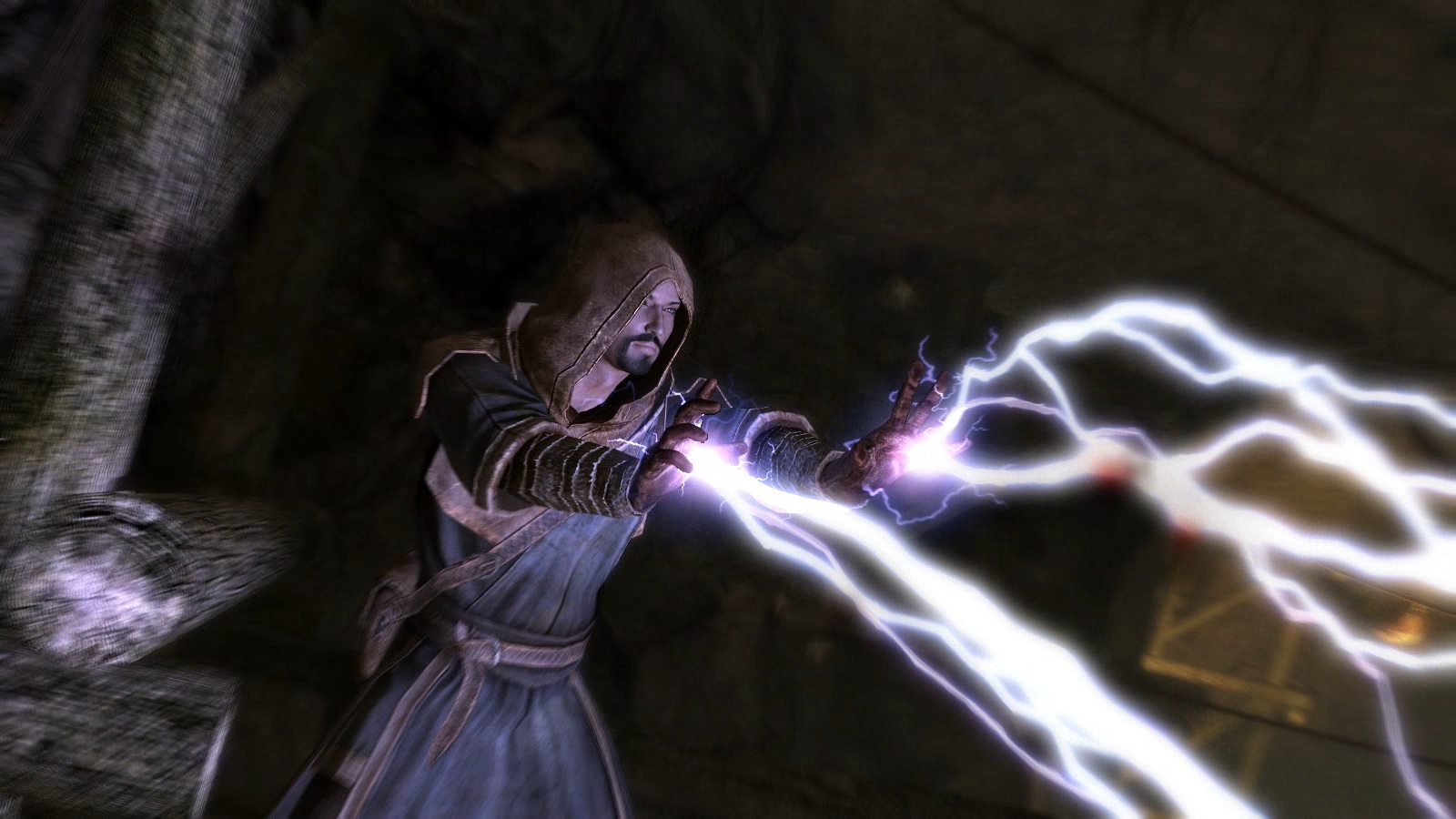
The spells in Skyrim take a definite back seat to swashbuckling and sword-wielding. Look at the Destruction perk tree, for example, and you’ll see damage boosts for fire, frost, and shock. There are still more damage boosts if you allocate points into dual-cast, and then there’s a branch that reduces the cost of more advanced spells. That’s it. Illusion magic is much the same with fear, calm, and frenzy, and conjuration is the same with bound, summons, and raising the dead.
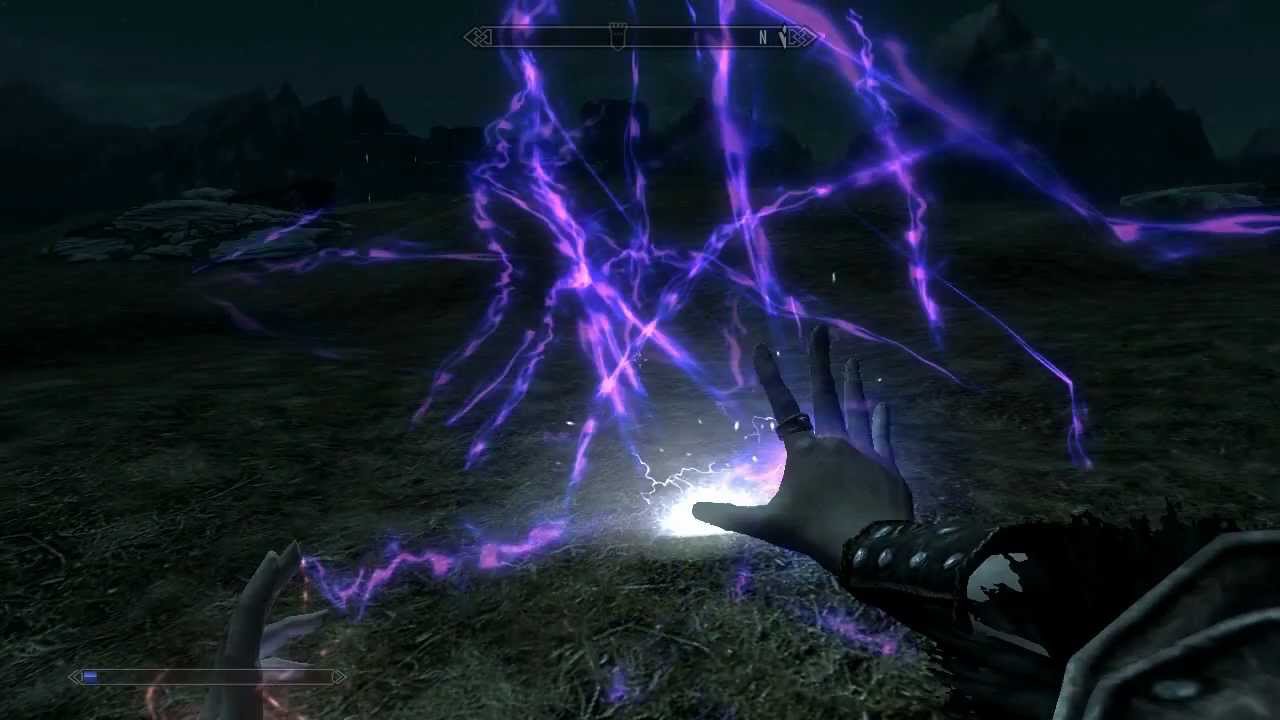
We’re not saying that running a mage in Skyrim isn’t viable – we’re saying that it’s going to end up looking pretty much the same every playthrough. Improving your ability with magic should be about so much more than just damage boosts and cost reductions. For ideas, Bethesda needs only look at the most popular mods out there for magic, and decide which ones to incorporate. Personally? We’d like our wizard to have a Familiar.
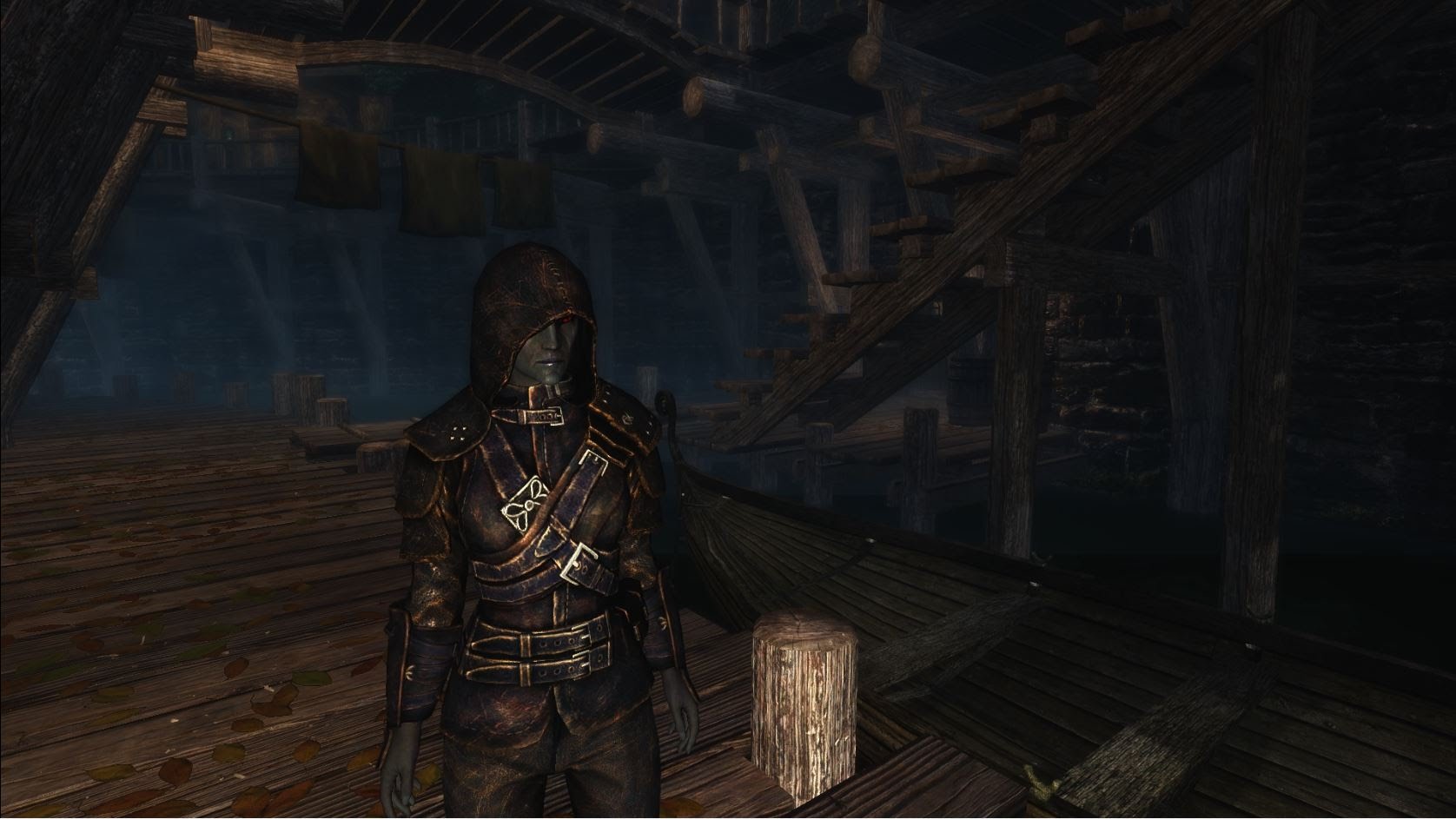
If mages got second pick, thieves had it even worse in Skyrim. That’s not to say that the thief perk trees weren’t useful – they were – but most of these skills defaulted to just faster dungeon crawling, sneaking around monsters, or more successful pickpocket attempts. The thief trees could have been the most versatile of the lot, from cunning speechcraft to nimble sneaking to clever alchemy.
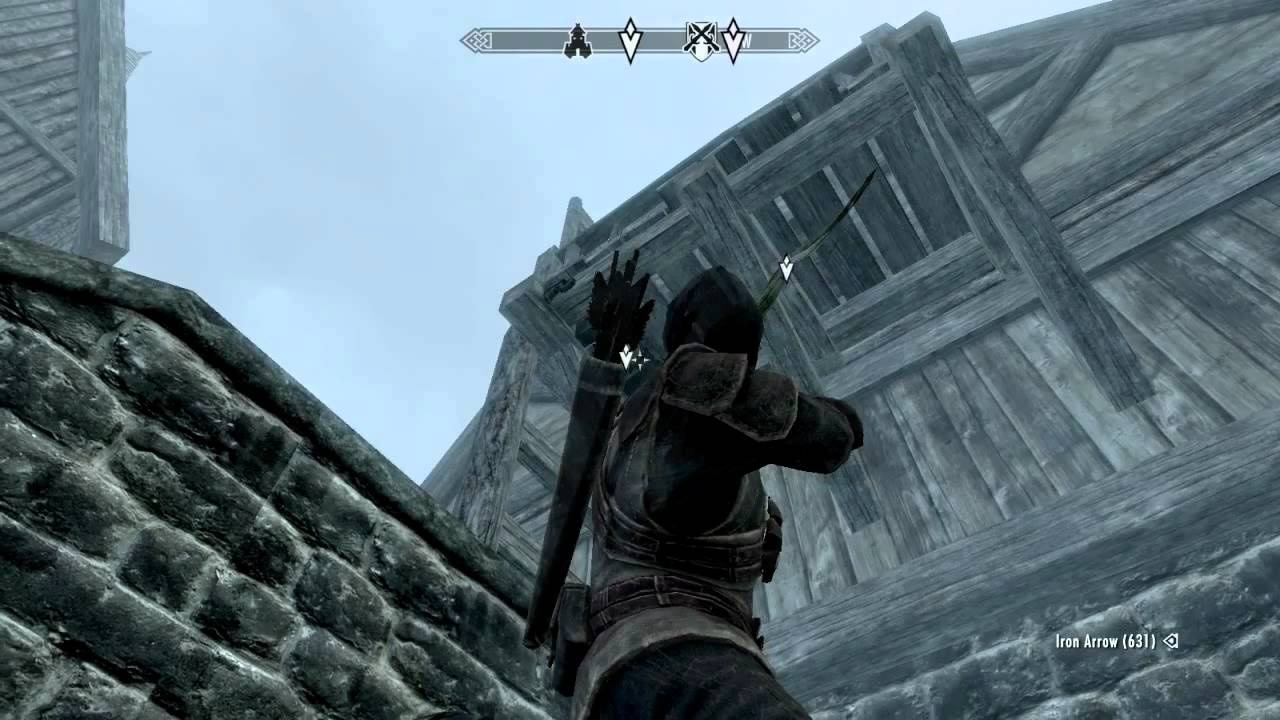
Imagine a thief build where you brew a morphing potion, drink it, and then infiltrate the ranks of the Forsworn to try and talk their Briarheart leader into freeing the prisoners. Or a build where you’re a nimble cat burglar, dodging in and out of combat with city guards while throwing poisoned daggers, tightrope-walking and using a hook-shot to climb walls.
The possibilities here are really as limitless as Bethesda can think and program, and by now that’s an impressive degree. One thing’s for certain though: The more flexibility we have with our character builds, the more builds we can get. The more builds we can get, the more playthroughs we’ll do. The more playthroughs we do, the more hours we’ll want to invest in the next installment of one of our favorite series of all time: The Elder Scrolls.
